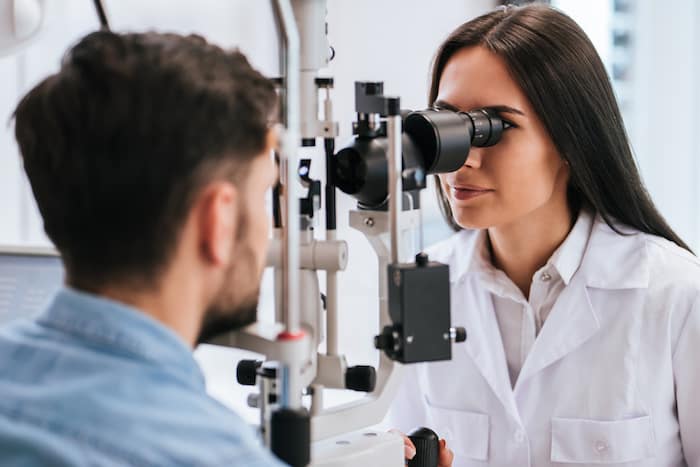By Dr. Mark Ruchman, M.D.
COVID-19 has significantly impacted how people approach and perceive health care. For many providers, including eye doctors, the most important question throughout the pandemic has been how to provide care while maintaining safety for patients. Although many offices have been forced to adapt and implement new protocols to ensure patient safety, the impacts of the pandemic on patient perceptions of care have gone much deeper than just new safety expectations.
People’s views about eye health, access to care and other findings were captured in Versant Health’s second annual Vision Wellness Study. Fielded nine months after the first lockdowns of the COVID-19 pandemic, the study explored how people’s views of eye exams have changed in the pandemic environment, including beliefs about eye care services, the role of cost and affordability on care and the relationship between eye care and overall health.
Despite the pandemic, Americans see the value of eye exams
The study found that Americans are increasingly recognizing the importance of eye care. Despite the pandemic, more adults say they received an eye exam within the past two years, compared to those surveyed during 2019 (81% vs. 77%).
Additionally, more than half (53%) say their household members get an eye exam about once a year. Of the many benefits of an eye exam, respondents say identifying eye diseases and other types of chronic conditions are the most valuable services provided by eye care professionals – even more so than using eye care to save money on overall care. This reveals that although cost remains a top healthcare concern for Americans year over year, the use of eye exams for preventative care and healthy habits are leading reasons for seeking vision care services.
Health plan executives also recognize the importance of vision care for their members and predict that its value will grow after the pandemic, with 65% of health plan executives believing the importance of vision care insurance to members will increase substantially or somewhat as a result of the pandemic.
This could be due to the role of healthy vision in independent living and wellness, both of which have been in the spotlight during the pandemic – for example, visual impairments impact mobility and even safety during daily tasks, particularly for people who live alone. This fact, combined with survey respondents frequently citing identifying eye diseases and other types of chronic conditions as the most valuable eye care services, points to the important role eye exams serve in preventative care. Americans see eye doctors as an integral part of their healthy living and disease prevention plan.
Social determinants are impacting eye care access
Despite the low cost of eye care, people still report experiencing barriers to accessing vision care, particularly those in lower income households. Obstacles such as care costs, affordability and lack of insurance hit low-income communities more often: 43% of people with incomes under $35,000 cite cost and affordability as the reason why household members don’t go to the eye doctor as often as they’d like, compared to 26% of people with incomes of $75,000 or more. To add, while 81% of respondents say they received an eye exam in the past two years, only 68% of people in households with incomes under $35,000 say the same.
While cost of care is the main reason people say they do not visit the eye doctor, the survey finds health plan executives have a different perspective – 88% cite lack of and cost of transportation as the key obstacle for members’ access to eye care services. While this may seem like a disconnect between members and health care executives, it is not—both health plans and their members agree that access is a concern, whether it’s cost of care or cost of transportation to care.
The relationship between cost and access is not new, and the study results further emphasize the need to implement strategies that increase access for all patients. The good news is that the pandemic has sped up the use and availability of telemedicine, which will become more of a standard in the future, as conversations around making care access more equitable continue beyond the pandemic.
People are connecting the dots between the eyes and whole-body health
Eye exams remain one of the lowest-cost and least-invasive methods of gauging overall health, and the majority of consumers (84%) are highly or somewhat confident that eye doctors can identify serious chronic health conditions. This supports the long-term health and financial benefits that eye exams can provide for patients and highlights the trust patients have in their eye care professionals as a go-to resource for treatment of serious conditions.
COVID-19’s disruption of our health care system has changed our models and delivery of care, but what hasn’t changed is the value of eye care as an inexpensive vehicle for not only healthy vision, but also early disease detection and intervention. With care access being advanced by telemedicine, the future of eye care is very promising.
To learn more about Versant Health’s 2020 Vision Wellness Study and additional findings, check out the executive summary and infographics.
Dr. Mark Ruchman, M.D. is the Chief Medical Officer at Versant Health, a managed vision care company, focused on creating an integrated and seamless experience for health plans, members, and eye care professionals across the total eye health value chain.
The Editorial Team at Healthcare Business Today is made up of skilled healthcare writers and experts, led by our managing editor, Daniel Casciato, who has over 25 years of experience in healthcare writing. Since 1998, we have produced compelling and informative content for numerous publications, establishing ourselves as a trusted resource for health and wellness information. We offer readers access to fresh health, medicine, science, and technology developments and the latest in patient news, emphasizing how these developments affect our lives.








